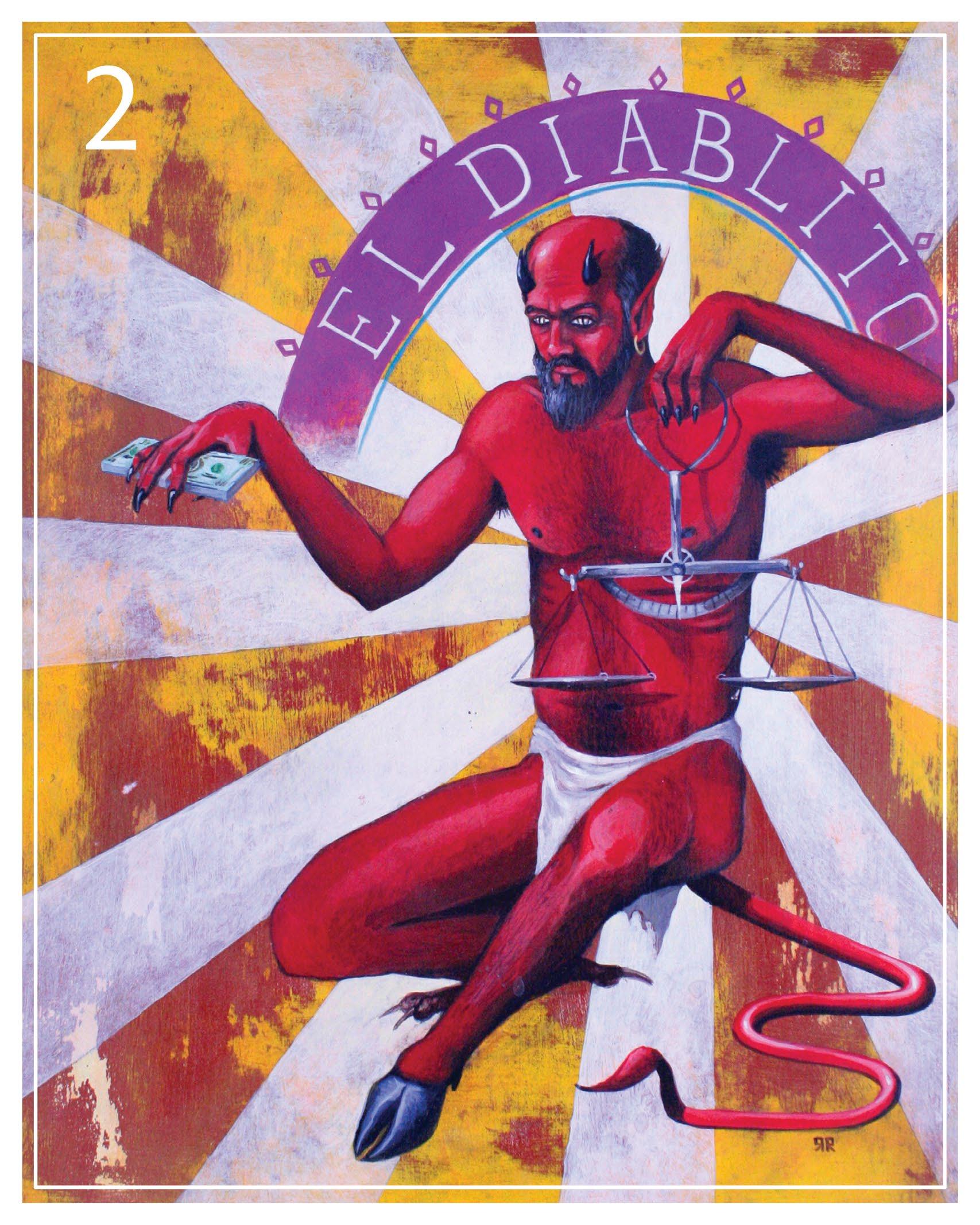
5 minute read
Robert Romo
from Phase 7.4
Article originally appeared in issue 7.4 "Phase," 2015.
Roberto Romo was born, as he puts it, “in the middle of nowhere” in the Sierra Madre; and throughout his early school years, he moved back and forth between Mexico and the US, which frequently put him behind in classes. When he did not understand a lesson, he would doodle. Today he is a MALI (Multicultural Arts Leadership Institute) graduate, the first in his family with a college degree, and he’s active in the San Jose arts community as a freelance illustrator, an art director at the newspaper El Observador, and a teacher.
Advertisement
For the Opera Cultura Theatre production Cuentos de Peregrinacion (Tales of Pilgrimage), Romo was commissioned to distill the Mexican migrant experience into five paintings. In “Working in the Fields,” a strawberry pierced by a nail dominates the scene, serving as pedestal for a pale gold hummingbird, its wings serenely lifted as though ready to take flight. The strawberry’s sweetness is juxtaposed with the physical pain and financial struggle of the migrant worker: that sweetness comes at the cost of someone else’s bitter sweat and tears. The hummingbird represents the migrant’s ability to adapt to and to survive, with grace and resolve, any situation. In “Leaving Mexico,” the Mexican eagle perches proudly before the Statue of Liberty as caballero, its familiar features distinctly Mexican, an ochre cowboy hat set firmly atop its head. The symbols of the two cultures are deftly interwoven into one whole, one new identity. In “Crossing the Border,” a silent trio of compass, water, and vulture conjures up the death that awaits so many who undertake that long and harrowing trek through the desert. “The empathy of the artist is universal,” Romo observes.
Empathy is only the start. For Romo, the drive to create is bound inextricably also to the drive to examine and analyze. At the School of Arts and Culture, he introduces art as a way to guide students to live their lives more consciously, exposing the dangers of not looking at the world with awareness, of not questioning, of too readily assuming that what is routine in life is also truth. Art, for Romo, is the cornerstone of mind, spirit, and individual

thought: it is the magic created from meditation. “Art is there to recover what is hidden and what has been lost,” he says. “I paint to provoke. Art starts a dialogue within yourself.”
His current project, La Nueva Loteria , explores what he calls his hybrid self: the intersecting bloodlines of aboriginal and European. This 54-painting series is based on the widely played card game in Mexico, brought from Europe and assimilated into Mexican culture hundreds of years ago. “We are a society that has been vandalized,” Romo says. “We’ve been obligated to survive by any means.” Romo’s reenvisioning of the cards brings to the fore the symbols of a Mexican and an Aztec culture smudged out of existence by a dominant European system. In the original deck, La Muerte, the card of death, features the standard Grim Reaper of European religion and folklore. Romo has depicted instead a skeleton reclining, as if sleeping, on a pillow, an homage to the aboriginal view of death as a long sleep. In his vision of El Corazon, the heart is fully realized in ultra-realistic anatomical detail, with two delicate gold bands beside it, anchoring love within marriage and family.

The exhibition is scheduled for this coming November at the School of Arts and Culture, and Romo’s goal is to have the paintings available in card form as a real game: La Loteria reinterpreted for the new millennium.
In a world of ready mechanization and assimilation, a world too formed of and by mass culture, Romo pushes himself, his students, and us to question the picture of reality the world offers, calling upon all of us to press past that picture and to see what really is. In this quest, the artist leads the way. “We form matter out of antimatter. We are like God, like creators. Artists provoke the spirit,” he says. “We artists are the earthquake. Everyone stops and listens.” To do this, to be this, sometimes means leaving the comfort and safety of the established. But do not shrink from the task, Romo tells us. “You are a coward if you don’t launch yourself at the unknown,” he urges. “Go out and get it.”

Written by Anna Bagirov | Photography by Daniel Garcia


